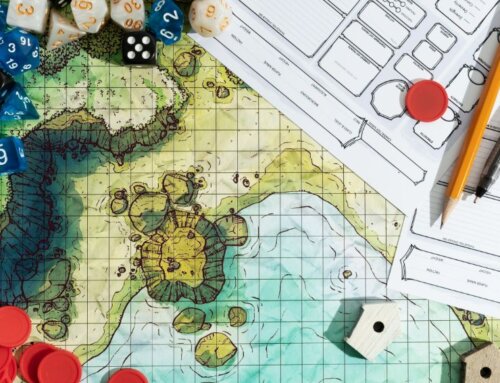In the world of tennis, each game represents a strategic battle, a step closer to victory. But have you ever wondered just how many games make up a set of tennis?
The answer may surprise you. The number of games in a set can vary depending on the format of the match and the specific rules in play. Join us as we explore the different set formats, from regular sets to unique variations, shedding light on this fundamental aspect of the game.
Key Takeaways
- Regular sets in tennis typically consist of a maximum of 6 games per player.
- Tie-breaks are played when both players reach 6 games to determine the set winner.
- Short set formats aim for players to reach 4 games with a 2-game lead, often including tie-breaks.
- Sets without tie-breaks continue until a player leads by 2 games, seen in prestigious events like the French Open.
Regular Sets to 6
Regular sets in tennis typically consist of a maximum of 6 games per player, with the first player to secure 6 games and a 2-game lead emerging victorious in the set. If both players reach 6 games each, a tie-break is initiated to determine the set winner. Tie break rules dictate that players alternate serving every 2 points, and the first player to reach 7 points with a 2-point lead clinches the set.
Strategic set point strategies become crucial during these pivotal moments. Players often aim to maintain focus and capitalize on their opponent’s weaknesses to secure the set. Managing nerves, staying aggressive yet composed, and adapting to the match situation are key components of successful set point strategies in tennis.
8 Game Pro Set
When considering the Game Pro Set format in tennis, players must aim to secure 8 games to win the set efficiently. This format introduces a unique dynamic with a potential tie-break when the score reaches 7 games all, adding a layer of suspense and strategy.
The tie-break strategy becomes crucial at this point, requiring mental resilience and quick decision-making under pressure. Game Pro Sets are favored in league matches for their time-saving advantages, ensuring matches typically last between 40 minutes to an hour, promoting efficient tournament scheduling.
The intensity of matches played in the Game Pro Set format tests player endurance and adaptability, making it a thrilling option for showcasing skill and determination in a relatively shorter timeframe.
Short Set Formats
Short set formats in tennis present a condensed and fast-paced style of gameplay, requiring players to reach 4 games with a 2-game lead for a swift victory. These formats often incorporate scoring variations such as tie-breaks when the score is tied at 3-3 or 4-4 to determine the winner efficiently.
Matches played over the best of three sets frequently utilize short set formats to speed up the overall gameplay, making for fast-paced matches that keep fans engaged. For instance, the Fast 4 format adds further excitement with rules like sudden death deuce and no let to ensure matches progress quickly.
Tournaments opt for short set formats to manage time effectively and provide a more dynamic and thrilling competition for both players and spectators.
Sets With No Tie-Break
In contrast to the fast-paced nature of short set formats in tennis, sets with no tie-break prolong matches until one player establishes a two-game lead, a rule still upheld in prestigious events like the French Open’s final set. When facing a set without a tie-break, players must adapt their strategies to maintain mental endurance as the match progresses.
Tie-break strategies, commonly used to break deadlocks in other sets, are rendered ineffective in these situations, requiring players to rely on consistency and resilience to edge out their opponent. Matches under this format can become battles of attrition, testing not only physical stamina but also mental fortitude.
The extended nature of these matches can lead to fatigue, potentially impacting a player’s performance in subsequent rounds.
Average Tennis Match Duration
The duration of a tennis match is influenced by factors such as player efficiency, match competitiveness, and playing styles, ultimately determining the average number of games played.
Historical match lengths vary depending on the level of competition and the era in which they were played. For example, in the past, matches tended to be longer due to different playing styles and equipment.
The impact of player styles is significant in modern tennis, with aggressive players often finishing matches quicker by dictating points and forcing errors, resulting in fewer games played. On the other hand, defensive players may engage in longer rallies, leading to more games per set.
Understanding these dynamics provides insights into how player strategies affect the overall duration of a tennis match.
Final Thoughts
Considering the strategic implications and statistical nuances of tennis sets, it becomes evident that each game played within a set holds substantial weight in determining the ultimate outcome of the match. Tiebreak strategies play a crucial role in deciding close sets, requiring mental toughness and strategic acumen to outmaneuver opponents in high-pressure situations.
Players mustn’t only focus on winning games but also be prepared for tiebreak scenarios that demand a different approach and mindset. Mental toughness becomes paramount in overcoming setbacks and maintaining composure during pivotal moments, ultimately influencing the flow and outcome of a set.
Understanding these dynamics can give players a competitive edge, allowing them to navigate the complexities of tennis sets with precision and resilience.
Conclusion
In conclusion, the number of games in a set of tennis can vary depending on the format being played. Whether it’s a regular set to 6 games, an 8 game pro set, or a shorter format, each set brings its own strategic challenges and opportunities for players.
Understanding the different set formats can help players adjust their game plan and tactics to secure victory in a match.
Check out more articles:






Leave A Comment